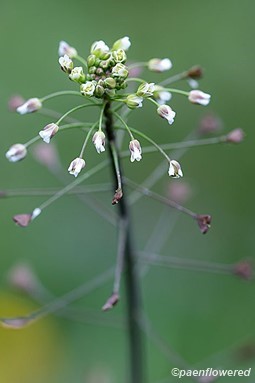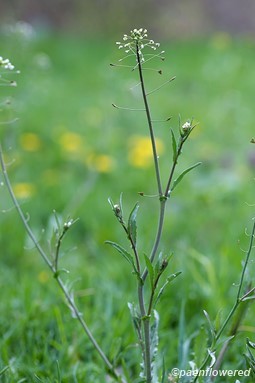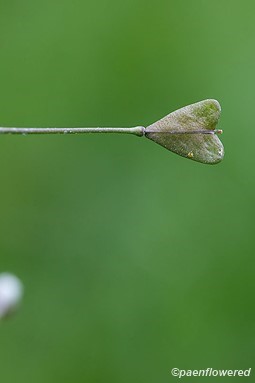Capsella bursa-pastoris
A common European weed of fields and roadsides
Capsella bursa-pastoris shepherd's purse
This annual species of the mustard family is native to Europe, but is now found worldwide. The 4-petal, white flowers are tiny and form in loose clusters along the stem. The plant itself is erect, slender and weedy and like many alien species grows in waste areas including roadsides, lawns and cultivated fields. The basal leaves resemble those of dandelion, forming a rosette. The stem leaves are small, arrow-shaped and clasping.
It is best distinguished from similar species by the flat, triangular seedpods, dented at the top, that form from the flowers after fertilization. These are sometimes described as heart-shaped. These are said to resemble the purse of a medieval shepherd. It blooms almost continuously from March to December depending on location and is common throughout North America.
The seeds contain mucilage that gets sticky when wet. It has been proposed that this mucilage may trap small insects as a source of minerals for the seedling. This would make the plant semi-carnivorous. The young leaves are edible and are used as a raw or cooked green, particularly in Asia. There are uses for the plant as animal feed for cosmetics and for medical purposes.
Habitat & Range
Grows in cultivated fields, along roadsides, and waste grounds.
Present in all counties of the state.
Range: Found throughout North America.
| EMP: | FACU |
|---|---|
| NCNE: | FACU |
Phenology
Flowers March through December.





Comments
Have you spotted this plant in your area? We'd love to hear about your experience! Share your comments or questions about the plant below. Comments are moderated before posting.